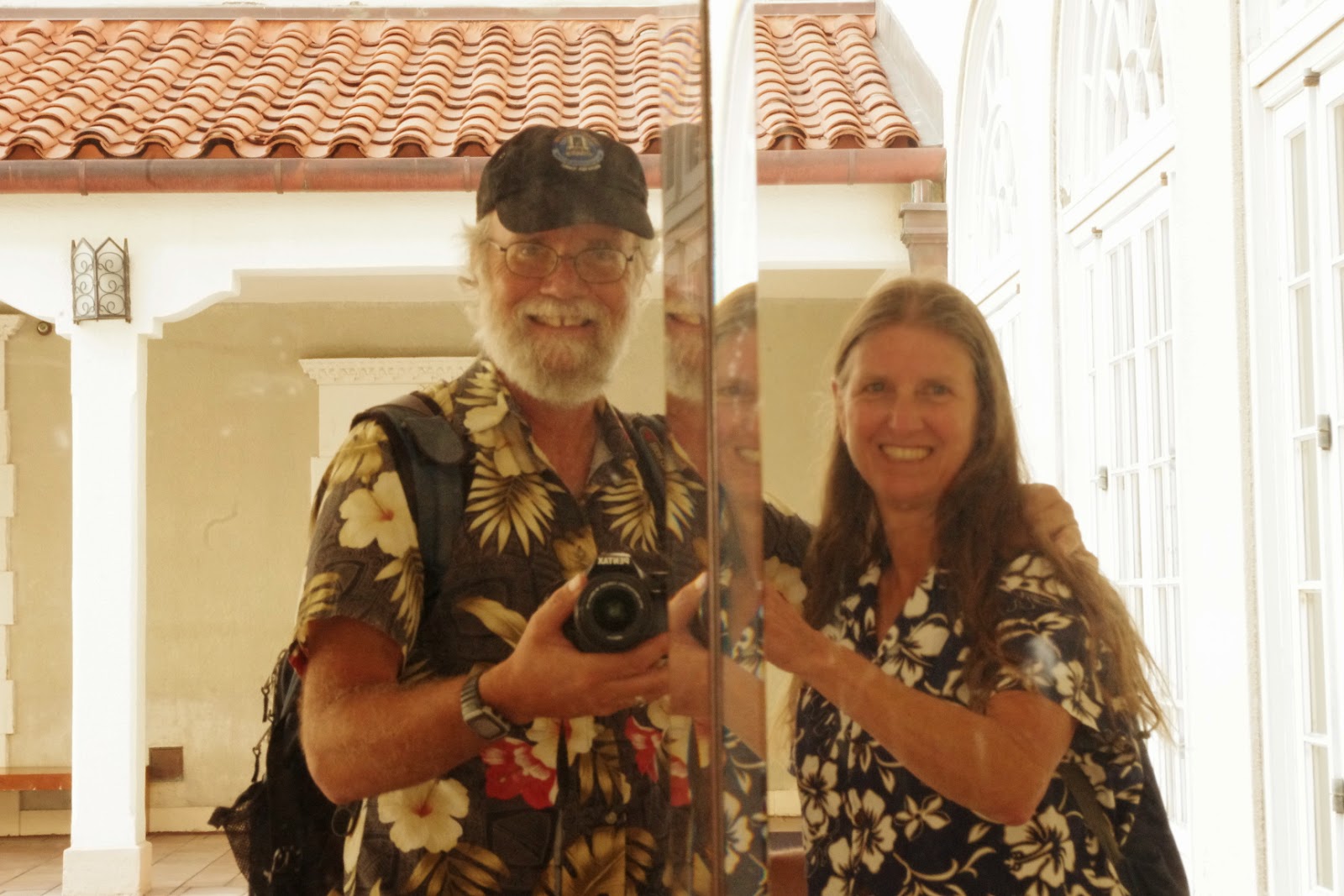In our several passing-bys of Pearl Harbor we noticed a very large floating radar dome docked in the harbor. Then, this morning, I looked out the window and saw it floating off to the southwest far out to sea.
(This is not my photo. We never got this close, If we had, we probably would have been ventilated by sniper fire.)
Behold the Sea-based X-band Radar, an integral part of our Star Wars defense. It cost $917 million to build, and has succeeded in over 15% of the tests it has participated in. Wow. There were plans to build two more, but I guess the defense dept. ran out of money.
The giant golf ball is normally supposed to be stationed in Alaska to keep an eye on missiles originating from Russia or North Korea. But when it needs to be repaired, it makes its way to Pearl Harbor. Because, you know, it's so much cheaper and easier than flying engineers and technicians to Alaska to do the work. I'm sure it does a lot of good against the suicide bombers of ISIS. Well, if the Japanese attack on Pearl Harbor taught us anything, it's that we're always well equipped to fight the last war. Still, it's sort of cool.
Our plan for the day was to hike into Diamond Head. From Waikiki it looks like a mountain range at the end of the beach.
Diana tries to get up the nerve to ask Fabio for his autograph; Diamond Head watches on dispassionately.
But from a more elevated point of view it is obvious that DH is a volcano crater.
The hike from the center of the crater up to the rim is a very popular stop on the tourist circuit. But it's well worth battling the crowds. We took a bus to a stop at the northern base of Diamond Head. Walking along a road that tunnels through the side of the crater, we ended up inside, then walked up a steep path towards the rim.
Early in the 1910's the crater was fitted by the military with an elaborate tunnel and bunker complex to help defend Honolulu from attack. Now the hike to the top uses the old pathways. This is a very steep set of steps that brought out the sweat.
Then it's on through the labyrinth tunnel system.
And up a rickety, rusty spiral staircase.
Artillery spotters looked out these narrow peepholes.
Finally,we made it to the top. Waikiki and Honolulu are behind us.
A view of Diamond Head Lighthouse.
Looking down into Diamond Head crater.
After letting the breeze cool us off a bit, we hiked back down and found our way to a bus stop. Next stop - the Honolulu Festival. For twenty some years the city of Honolulu has run an annual love-in to bring together Japanese people from the homeland and their long lost relatives in Hawaii. It is held in various places in Waikiki. The convention center was home to a massive craft and trade show selling all kinds of products from both Hawaii and Japan, as well as staging a number of performances.
Here, in the lobby of the Honolulu convention center, participants join in to do a Bon Dance.
Here's a short video. By the way, Diana didn't catch the part of the dance where I waltzed by. Can you believe it?
Next up were very energetic Kodo drummers ...
... as well as these Dojo drummers. Let me tell you, the acoustics inside the convention center were very reverberative ... and loud. After several minutes of chest-thumping, head-splitting thunder, I had to leave.
We wandered around Waikiki for a couple hours, then took the bus back to our Airbnb, where we made dinner and ate out on the balcony accompanied by the night lights of the city.

































































